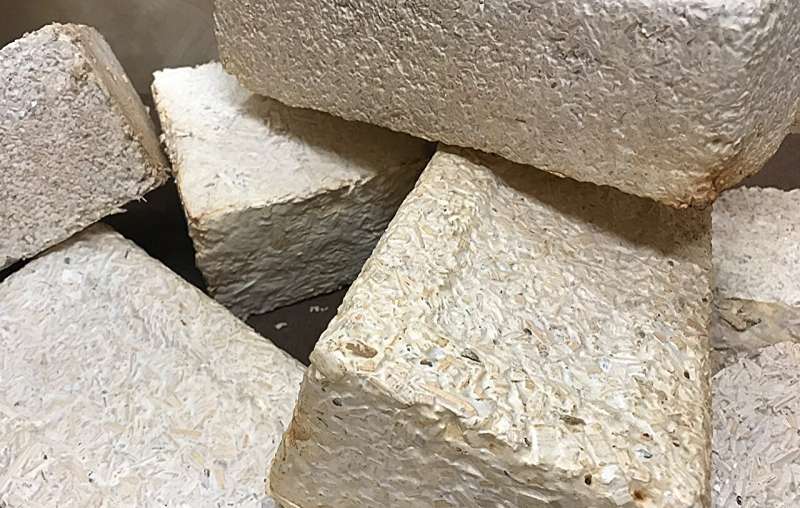The work is led by Lynn Rothschild, a senior research scientist at NASA Ames.
"As NASA prepares to explore farther into the cosmos than ever before, it will require new science and technology that doesn't yet exist" said NASA Administrator Bill Nelson. "NASA's space technology team and the NIAC program unlock visionary ideas—ideas that make the impossible, possible.
"This new research is a steppingstone to our Artemis campaign as we prepare to go back to the moon to live, to learn, to invent, to create—then venture to Mars and beyond."
Some habitats, such as landers and rovers, will be delivered to planetary surfaces. However, the mycotecture project team is developing technologies that could "grow" habitats on the moon, Mars, and beyond using fungi and the underground threads that comprise the main part of fungi, known as mycelia.
With this development, explorers could travel with a compact habitat built out of lightweight material containing dormant fungi. By adding water, fungi can potentially grow around that framework into a fully functional human habitat, while being safely contained to avoid contaminating the environment.
"We are committed to advancing technologies to transport our astronauts, house our explorers, and facilitate valuable research," said Walt Engelund, associate administrator for Programs in the Space Technology Mission Directorate at NASA Headquarters in Washington.
"We invest in these technologies throughout their lifecycle, recognizing their potential to help us accomplish our goals—benefiting industry, our agency, and humanity."
The mycotecture project could enable a new, multi-use material for in-space construction, reducing mass and saving resources for additional mission priorities. The proof of concept for this technology was demonstrated through earlier NIAC awards.
The team created multiple combinations of fungal-based biocomposites, fabricated prototypes, tested materials in a planetary simulator, evaluated enhancements including incorporating radiation protection, and drafted detailed mycelium-based moon habitat designs.
This project also has uses on Earth in addition to applications on other worlds. Mycelia could be used for water filtration and systems that extract minerals from wastewater.
From deep space human exploration to advanced propulsion and robotics, NASA aims to change the possible by supporting early-stage space technology research that could radically change the future.
"Mycotecture Off Planet exemplifies how advanced concepts can change how we envision future exploration missions," said John Nelson, NIAC Program Executive. "As NASA embarks on the next era of space exploration, NIAC helps the agency lay the necessary groundwork to bring innovative visions to life."
Work under the Phase III award will allow the research team to optimize material properties. It also will enable the team to progress toward testing in low Earth orbit. Future applications of this project could include integration into commercial space stations or infusion into missions to the moon with the ultimate goal of use on Mars.
NASA Innovative Advanced Concepts supports visionary, early-stage research ideas through multiple progressive phases of study. In January 2024, NASA announced 19 Phase I and Phase II proposal selections. NASA's Space Technology Mission Directorate, which is responsible for developing the new cross-cutting technologies and capabilities the agency needs to achieve its current and future missions, funds NIAC activities.
Provided by NASA



